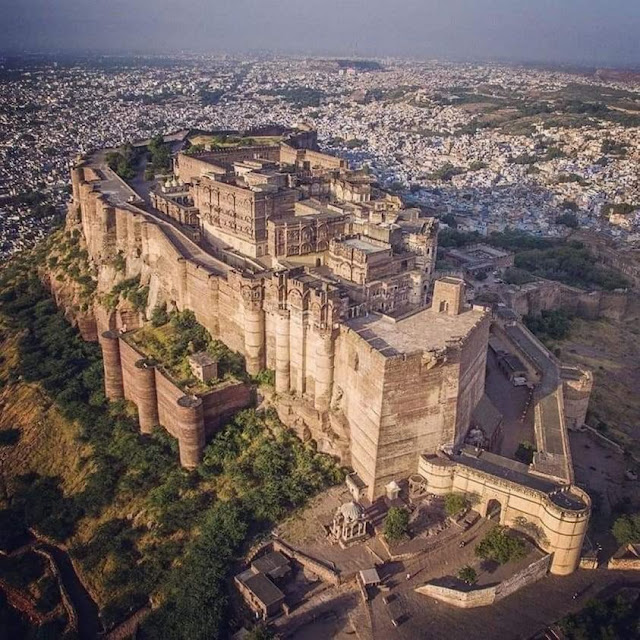Храм богинь Венеры и Ромы — некогда крупнейшее религиозное сооружение древнего Рима
Храм богинь Венеры и Ромы — некогда крупнейшее религиозное сооружение древнего Рима.
Сооружение занимало всю территорию от базилики Максенция и до долины Колизея, и было возведено на постаменте длиной в 145 м и шириной в 100 м. Храм был построен при императоре Адриане в 135 году н. э., на том месте, где когда-то располагался портик Золотого дома Нерона.
Храм занимал центральную часть портика: он был построен из двух целл, одна напротив другой, с общей внутренней стеной. Целла, выходившая к форуму, была посвящена богине города Рима — Роме, другая посвящена богине Венере.
Veste Wachsenburg
Замок Ваксенбург (Veste Wachsenburg) — замок в Амт-Ваксенбурге (Amt Wachsenburg) в Ильм-Крайсе (Ilm-Kreis), Тюрингия (Thuringia), Германия. Это один из Drei Gleichen, трех замков на вершине холма к востоку от Готы (Gotha). Первоначально он был построен в 10 веке.
Замок был капитально перестроен в 17 и 19 веках. В хорошо сохранившемся замке сейчас находится музей, гостиница и ресторан. Он был построен монастырем Херсфельд (Hersfeld). Глубина замка составляет примерно 93 метра (305 футов).
Фотограф: Robert DIcon
Yakushiji Pagoda, Japan
In the architecture of this 8th century Japanese Pagoda there are several relationships of the Golden Ratio (Phi). This temple was designed and built carefully so that every detail corresponds to the Golden Ratio of Nature, thus displaying a design aligned with the fractal harmony of the Universe. It is no accident that her beauty is often called "frozen music."
"The good, of course, is always beautiful, and the beautiful never lacks proportion." – Plato
ㅤ✧ Yakushiji Pagoda, Japan
✦ Image from the book "The Power of Limits: Proportional Harmonies in Nature, Art and Architecture", by György Doczi
Chateau de Chenonceau
Chateau de Chenonceau, probably the most peculiar and beautiful castle of the Loire. It was devised and protected by women. Diane de Poitiers commissioned the building of the bridge and gardens in 1555. It was later modified and owned by Catherine de Medici and Louise de Lorraine.
Shapur Khast Castle (also known as Falak-ol-Aflak)
Khoramabad, Lorestan Province,
Iran
Chhennakeshava Temple Belur Karnataka India
Poetry in Stone…
A view of the main shrine of the Chennakesava temple at Belur from the west or the rear of the star-shaped platform. The temple was built during the Hoysala king Vishnuvardhana and commissioned in 1117CE to commemorate an important victory in 1116 CE. It marks the apogee of the Hoysala art and architecture along with the temples at Halebidu and Somanathapura. The presiding deity Chennakesava (Handsome Kesava) is one of the many forms of Lord Vishnu. Elaborate carvings and sculptures with minute details embellish the walls of the temple and are a sight to behold and represents the pinnacle of artistic and cultural accomplishments of the Hoysala Empire that reigned from the 11th centuryto 14th century CE largely in present day Karnataka, India.
Популярные сообщения
-
Вселенная как организм . Художник Ли Джей МакКлоски
-
In the architecture of this 8th century Japanese Pagoda there are several relationships of the Golden Ratio (Phi). This temple was designed...
-
Neuschwanstein Castle in Bavaria, Germany. This enchanting castle built in the 19th century, called the castle of fairyland.
-
Assyrian king Sargon II (right) and his crown prince Sennacherib . Bas-relief from Sargon II's Palace at Dur-Sharrukin, Assyria, c. 716–...
-
Borobudur Temple Compounds , one of the greatest Buddhist monuments in the world, and was built in the 8th-9th Centuries AD, during the reig...
-
The Ziggurat of Chogha Zanbil is an ancient temple complex located in the Khuzestan province of southwestern Iran. It is one of the best-p...
-
This building is not a palace, court, library, or theatre — it's a 19th century factory in northern England. And its design was directly...


















%20and%20his%20crown%20prince%20Sennacherib.jpg)




